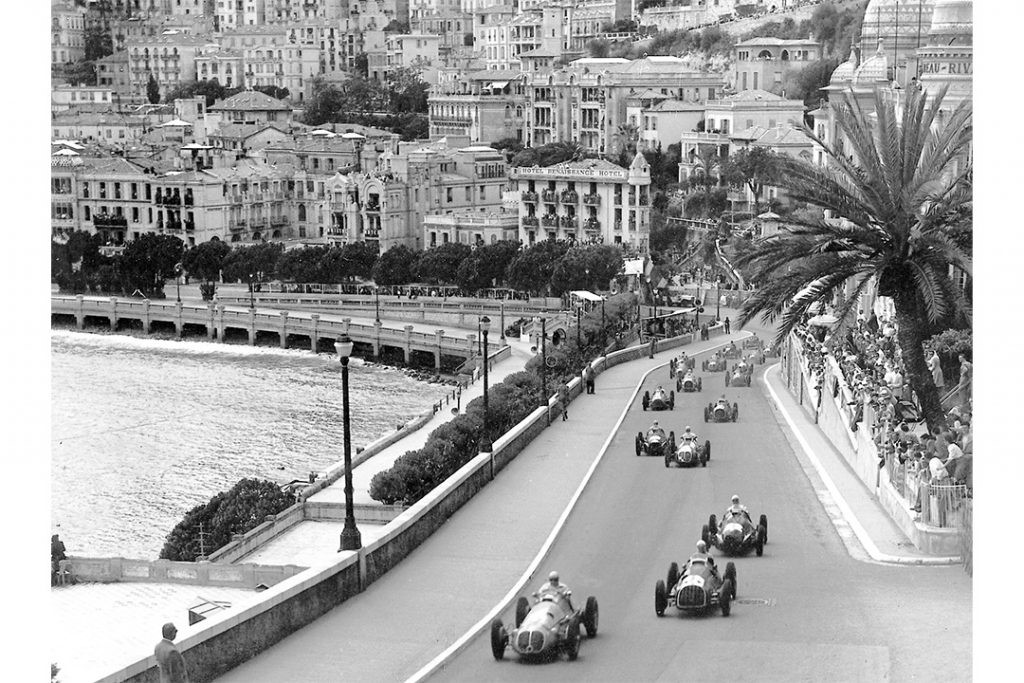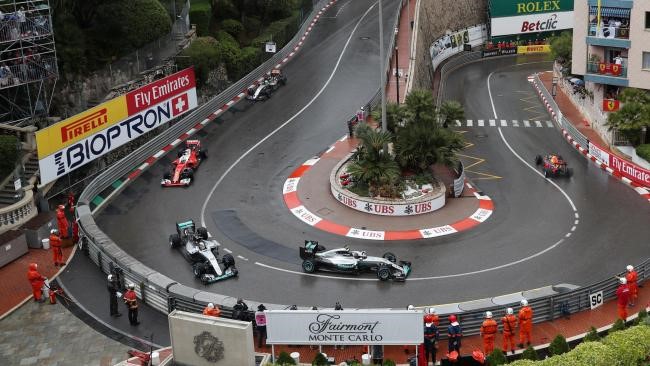Exceptionally
well known, this spectacular "city race", which takes place in a
highly-charged atmosphere, is one of the most testing stages of the Drivers’
World Championship.
Thousands of gear-changes in a labyrinth of track, the
slowest bend in the World Championship, the fastest breakdown service in the
world: the Monaco Grand Prix will give you plenty of thrills.Sunday 29 May 2022, Principality of Monaco
A Bit of History
The
Monaco Grand Prix is one of the oldest and most prestigious motor races. It is
contested in the Principality of Monaco, on an urban circuit designed in 1929
by Antony Noghes, son of the President of the Automobile Club of Monaco, and
under the auspices of Prince Louis II of Monaco. This creation met the
challenge of organising a race on the cramped territory of Monaco (around 1.5
km2 at that time), a condition required by the International Sporting
Commission so that the Automobile Club of Monaco was internationally
recognised.
Antony Noghes, as the General Commissioner, was charged with going to Paris to
present the candidacy of the Automobile Club of Monaco. Unfortunately he
returned forlorn, the gentlemen of the AIACR having noted that, while the
Club organised sporting events, they did not actually take place on Monegasque
territory. The 35-year-old Antony Noghes, whose self-esteem had been
wounded, had just, with all his youthful energy, launched himself into a
fantastic challenge: to create a motor sports event on national territory, that
is, in the city.
But wasn’t the idea of a high-speed circuit in the city unattainable?
Antony Noghes weighed the pros and cons for two years. He finally decided
to entrust his project to the only people from whom he knew he would get a
relevant and objective opinion: Louis Chiron for the sporting side of
things and Jacques Taffe for the technical side.
Then above all he had to convince the Société des Bains de Mer to get involved
and secure the funding for this competition. Its administrator, Mr René LEON
realised the benefits it could bring and released the require funds. No country
in the world would have such a circuit!
Six
months later, on 14 April, 1929, Prince Pierre inaugurated, with a
lap of honour carried out in a Torpedo Voisin driven by Charles
Faroux, the course director, the circuit of the 1st Grand Prix
of Monaco. In Monaco, 16 cars on the starting grid drawn by … lots: 8 Bugattis,
3 Alfa Romeos, 2 Maseratis, 1 Licorne, 1 Mercedes SSK. The Englishman,
“Williams” who arrived too late to take part in the official trial sessions,
took the chance of a wildcat training session at dawn on Saturday, putting the
whole of Monaco in a flutter. “Williams” won the Grand Prix in a green
Bugatti 35 B in 3 hours, 56 minutes and 11 seconds, having completed 100 laps
at an average speed of 80.194 km/h.

Up
to the war, the race’s popularity took off and confirmed its success year on
year. For ten years, the race did not take place, during the world war and the
years immediately thereafter. In 1948 Monaco re-established its Grand Prix
which resonated in the 50s to the names of Fangio and Maurice Trintignant…
On 15
April 1958, T.S.H. The Reigning Prince and Princess Grace of Monaco deigned to
honour the inauguration of the new headquarters with their presence and signed
the visitor’s book. It was at number 23, Boulevard Albert 1er, the club’s
current headquarters.
In the 60s and
70s, Jacky Stewart and Jean-Pierre Beltoise took up the baton, then Alain
Prost, Ayrton Senna and Ricardo Patrese in the 80s while the 90s saw the advent
of the uninterrupted reign of Schumacher.
Today, the Monaco Grand Prix still cultivates its difference, like in 1928: its
city circuit still continues to delight the 100,000 TV viewers across the
world. The Monaco circuit snakes around the Port Hercule, the
streets of Monte-Carlo and La Condamine, in a series of tight
bends surrounded by protective rails: there is no clearance between the
track and the rails, unlike on other circuits, which requires the presence of
cranes in several places to clear damaged cars as quickly as
possible.

Still
today, the Automobile Club of Monaco’s trials are organised with the utmost
respect for tradition and innovation, with still that touch of boldness which
characterised its creators and the pioneers of the last few centuries… The
drivers compete in their excellence to negotiate this extremely technical
course. The greatest names in motor racing distinguished themselves here,
from Fangio in the 1950s up to Schumacher in the 1990s.
Ayrton Senna won this legendary race six times and became part of
the legend of the Monaco Grand Prix.